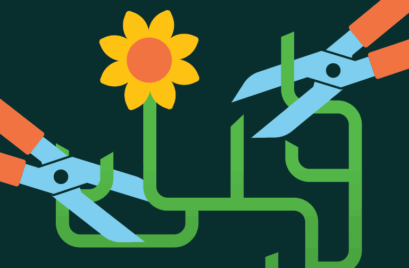
How to see our colleagues with fresh eyes
As we work together with people over a long (or even medium) period of time, it is easy to become very fixed in how we see them. It is part of human nature to take mental shortcuts once we have a settled judgment of something. However, this presents a challenge for giving meaningful feedback. When it comes time to provide feedback, positive or negative, we might find ourselves reaching for the same points over and over again.
Old News
There’s no doubt that repetitive feedback can have an unfortunately stifling effect on the potential impact of these types of discussions with our colleagues. It’s not uncommon for praise to end up being highly generic (like “you’re doing a great job, keep it up!”). Even when we point to something specific, if we are constantly praising the same aspect of a person (e.g. “your work ethic is immaculate), it becomes less impactful over time and we lose the opportunity to encourage incipient skill development. This sort of feedback is doing the person a disservice by failing to get into the specifics of what’s really working and what could be done even better.
In the same way, if we are picking up and commenting on the same opportunities for improvement over and over, a person can feel unmotivated around a persisting blind spot. We might fail to notice changes or other challenges that are coming up for them in their work. For example, if we are zeroed in to how our colleague drafts written documents, we might miss the chance to develop how they are building stakeholder relationships.
Being able to see each other with fresh eyes every now and then is a powerful tool for ‘resetting’ your relationship and improving your capacity to offer feedback and see new aspects of their ways of working. It may even change your perspective of them on a deeper level.
New Eyes
Breaking out of these fixed patterns of observation is difficult but not impossible. Try this: imagine a new person has come into your team and is shadowing that person you are going to give feedback. What are the seeing? What are they noticing? How might the person before them vary from the person you have constructed in your mind?
Research shows that this approach (called the “vicarious construal effect”) can actually change how we experience something we have become habituated to. By imagining how another person experiences something (or someone), we are able to ‘reset’ our own experience to a certain extent. This shift is not only abstract but biological. Our brain chemistry actually mirrors more closely the state of when we first experienced the person or thing.
So, before your next one-on-one chat with a colleague you’ve worked with for a while, try this exercise to get a new perspective. Each time you come into contact with them, whether in a team meeting or when collaborating on work, look at them as if you’ve never seen them before. Write down a list of their behaviours and actions — but from the perspective of a stranger, leaving behind your expectations and prejudices.
Both of you will benefit from it!







